I didn’t know much about Hadrian’s Wall when we chose to hike it. I loved the idea of hiking from inn to inn, and I’ve enjoyed seeing pictures of England’s countryside, so why not there? We hiked a thirty-four mile section of the Hadrian‘s Wall Path, which is an eighty-four mile coast-to-coast trail in northern England.

It was interesting to learn about this path that follows the course of an ancient Roman fortification wall. The construction of the Roman wall began in AD122 under the orders of Roman Emperor Hadrian. It was considered both a defensive barrier and a marker of the northern reaches of the Roman empire.
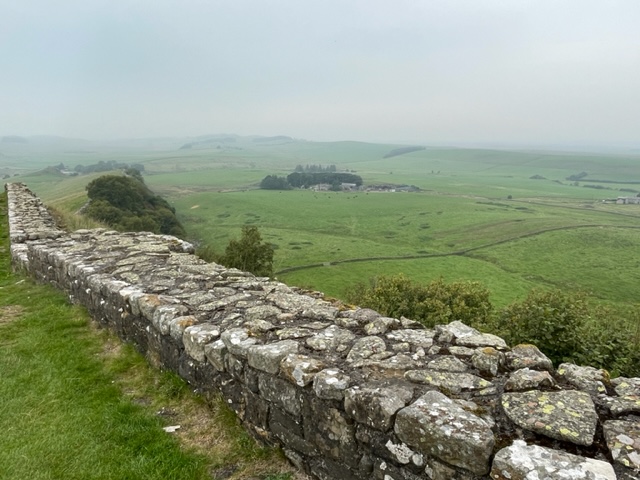
The original wall was 20 feet high and 10 feet wide. At each one-mile interval they had stone structures called milecastles which housed 32 soldiers.
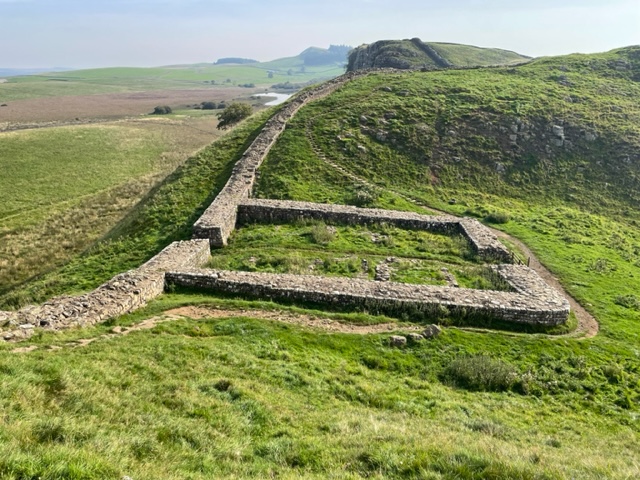
Evenly spaced between the milecastles were two stone observation posts called turrets. Additionally, the Romans had built numerous forts in proximity to the wall.
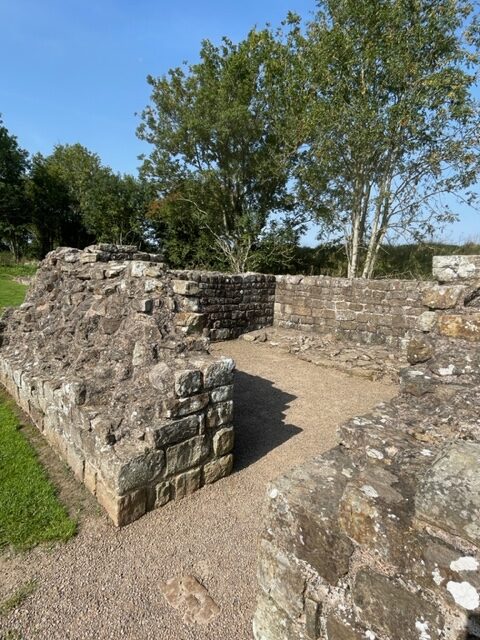
Back in its day, there was a garrison of around 20,000 soldiers from across the empire at Hadrian’s Wall. After three centuries the Romans left, and many stones were pilfered to be used to build stone fences, and stone houses, by the local people.
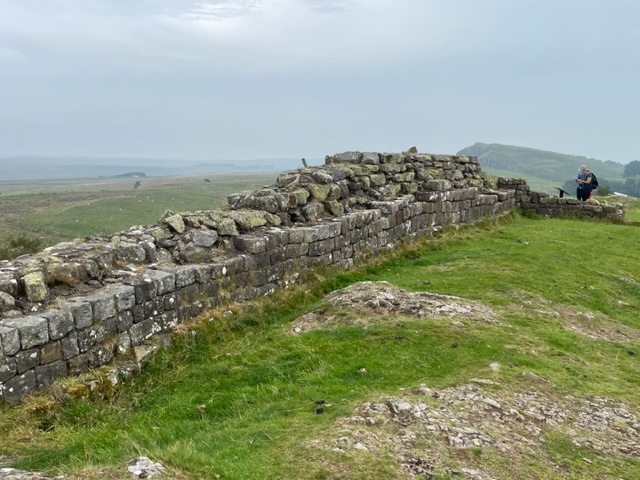
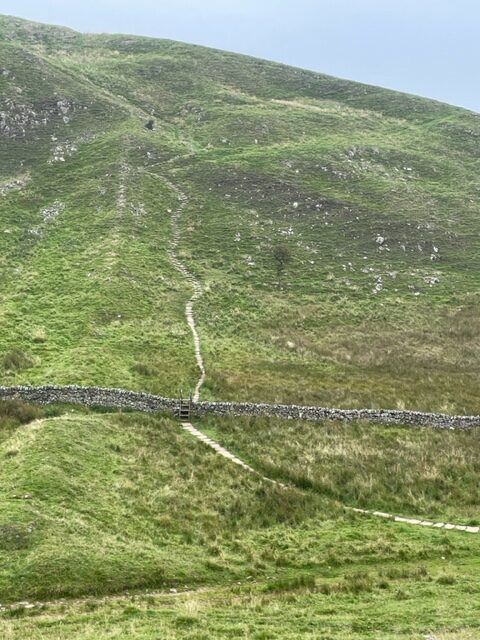
John Clayton, in the 19th century, spent 50 years excavating Chesters Roman Fort and many other Hadrian’s Wall sites and is credited for saving Hadrian’s Wall. It is now a UNESCO World Heritage Site. There is a museum along the way, next to Chesters Roman Fort, with amazing artifacts that John Clayton excavated and collected. It was fascinating.

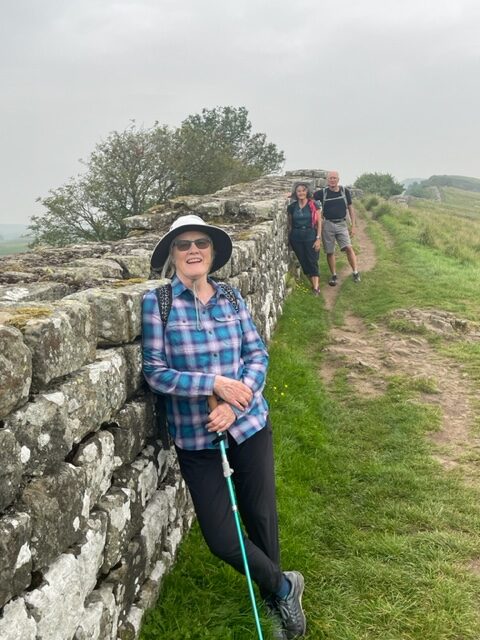
Today, the stone wall is intact in several places, up to 20 feet high, but then only a remnant stone, or nothing visible, in other places. Foundations and remnants of forts, milecastles and civil settlements were enroute with spectacular English country landscapes as the backdrop.

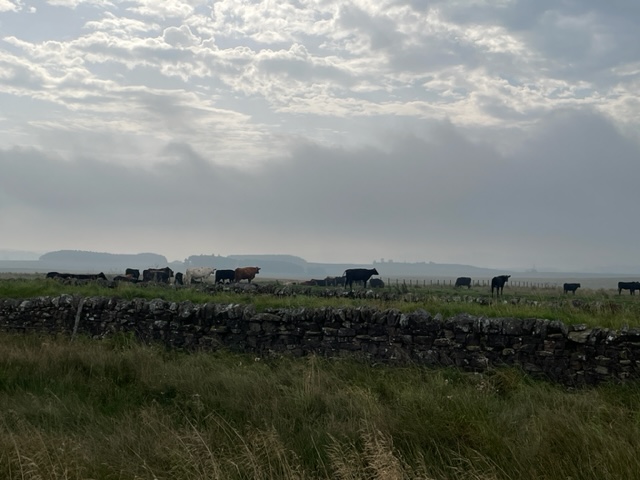
We hiked mostly in open countryside, although there were trees in the periphery… in the farm pastures and beyond.

One lone sycamore tree at the bottom of a gap along the Wall is very picturesque, and been seen in several movies apparently – one being Robin Hood. If you hike along the Wall path, it takes you down the gap to the tree, and then you walk back up the other side. The tree is stately and magnificent (and 300 years old!) The area is known as “Sycamore Gap”.

There was a small portion of the trail that goes through a wooded area…a fairy forest we called it.

And there was a copse of trees with protruding roots that provided a perfect place for us to sit and eat lunch one day.
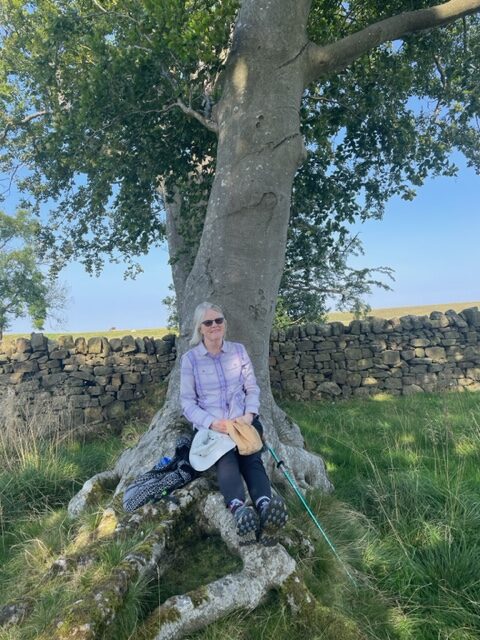
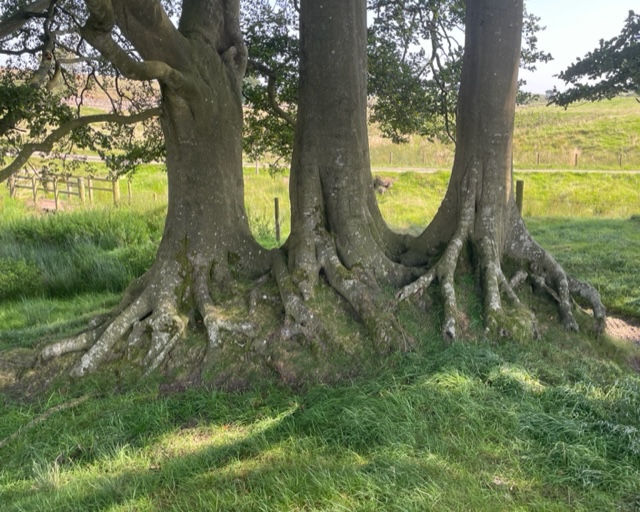
Beauty surrounded us on our hike, and we were grateful for the opportunity to walk this Walk through this amazing setting.
Looks like a wonderful place for a walking vacation. Captivating read.
Thank you Karen.
It was an interesting, and beautiful, path.
What an interesting excursion. Fun to see and hear about the history of Hadrian’s Wall! :0)
Thanks Vic.
It’s so interesting to see places that are so old.
Very interesting facts about Hadrian’s wall! We knew very little about it. Enjoyed the pictures too.
Thanks. It was fun to learn a little about the Romans in England.
And, the dates of places and events go so far back.
Valerie, your photos are fantastic! Thank you for sharing them, as well as a bit of history. Diane
You’re welcome…and thank you Diane.
Trees are such a joy! What an amazing journey you have been on!
Yes, it was quite the journey. So saddened about the tree at Sycamore Gap though.
I am learning a lot from you. Such a work of craftsmanship and art, that wall. And the trees, oh, the trees. And to think someone cut down that marvelous tree. Why, oh, why? You need to make a print of your tree photo and frame it.
Audrey, it’s hard to come to grips with the vandal’s act of violence.
I do plan to take a print of the tree.